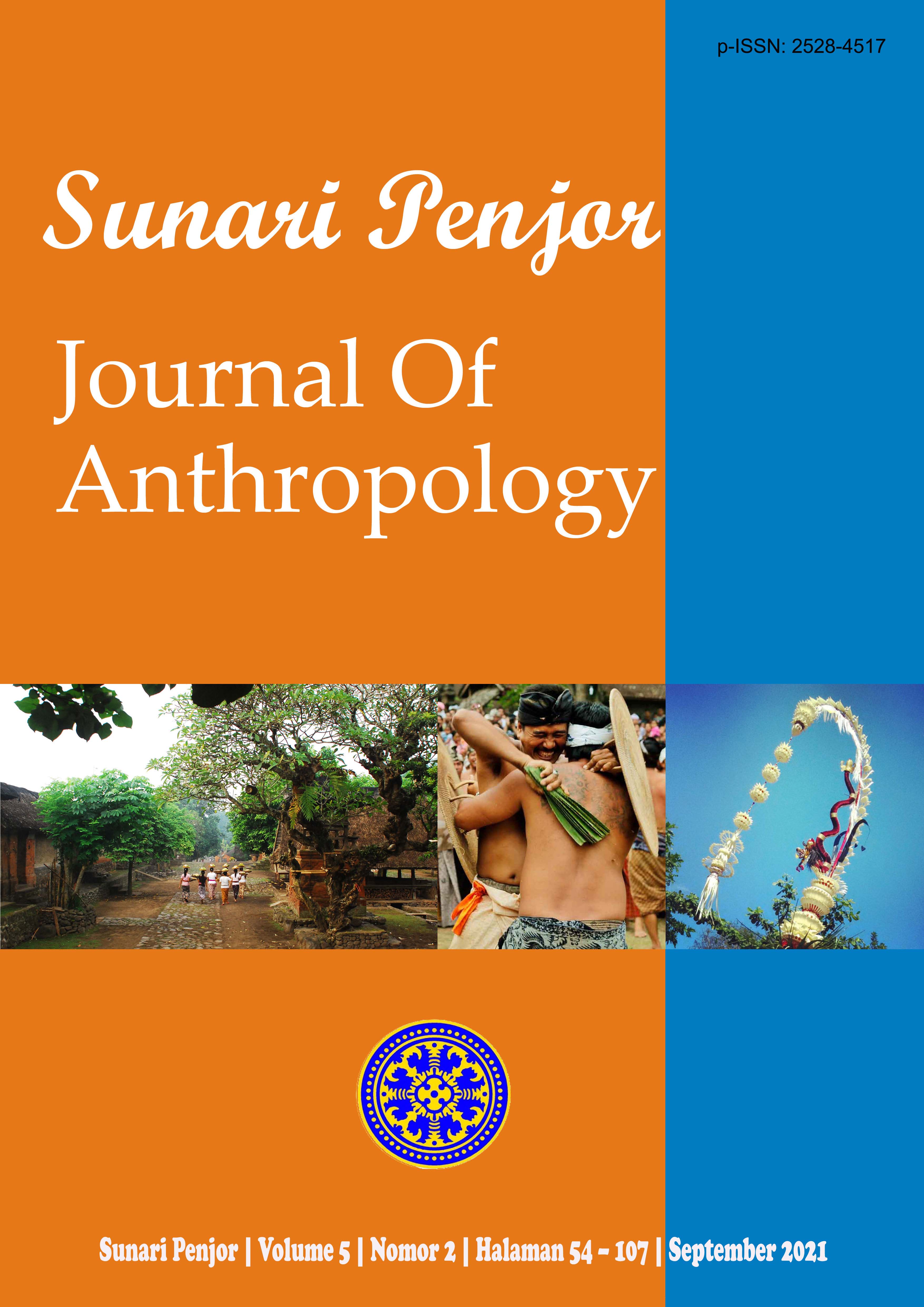Eksistensi Roti Buaya Dalam Masyarakat Setu Babakan
Abstract
Indonesia has a variety of ethnicities and cultures with their own characteristics as self-identity. The characteristics of each tribe are inseparable from the culture and customs of the generations of their ancestors who believe until today. One of them is a symbol of marriage that is believed to have its own meaning and beliefs of each of these customs and cultures. In this case, betawi people use crocodile bread as a symbol of marriage which is considered as a symbol of loyalty and stability. Setu Babakan village is one of betawi village in South Jakarta that still maintains this crocodile bread tradition even though wedding celebrations have been done in a modern way. In this study explained the reason why crocodile bread is still maintained by the people of Setu Babakan Village and how the existence of crocodile bread in the community using ethnographic research methods that are classified in qualitative research. Purposive and snowballtechniques are used in the selection of informants for interviews as well as observation techniques directly at the research site. In this study, crocodile understanding was found as a symbol of loyalty still held by betawi people because it has become local knowledge that has been done for generations. The understanding of crocodiles as a symbol of loyalty is also supported by the Betawi community so that the use of crocodile bread in betawi community wedding ceremonies persists.
Downloads
References
Aliffiati, A.A.A. Murniasih. (2018). Tradisi Kuliner Tradisional Masyarakat Lumajang Representasi Indentitas Budaya Pendalungan. Denpasar: Universitas Udayana.
Danandjaja, James. (1994). Folklore Indonesia. Jakarta: Grafiti.
Dhanayanti, Irma Febrie. (2019). Perubahan Makna Dan Simbol Dalam Tradisi Seserahan Makanan Dalam Upacara Pernikahan Betawi. Jakarta: Universitas Islam Negeri Syarif Hidayatullah.
Foster, G.M., Anderson, B.G. (1975). Equity in health service : empirical analysis in sosial policy. Cambridge: Ballinger.
Foster, G.M., Anderson, B.G. (1986). Antropologi Kesehatan. Depok: UI Press.
Gardjito, Murdjati, dkk. (2017). Profil Struktur, Bumbu, dan Bahan Dalam Kuliner Indonesia. Yogyakarta: Gadjah Mada University Press.
Ihromi, I.O. (1996). Pokok-Pokok Antropologi Budaya, Jakarta: Yayasan Obor Indonesia.
Koentjaraningrat. (2010). Sejarah Teori Antropologi I. Jakarta: UI Press.
Mawarti. (2000). Pengetahuan Masakan Indonesia. Yogyakarta: Adicita Karya Nusa.
Moleong, Lexy J. (2000). Metodologi Penelitian Kualitatif. Bandung: PT. Remaja Rosdakarya.
Nurti Yevita, (2017). “Kajian Makanan Dalam Perspektif Antropologi”. Jurnal Antropologi: Isu-Isu Sosial Budaya Vol. 19 Juni.
Purbasari, Mita. (2010). “Indahnya Betawi”. HUMANIORA Vol. 1 No. 1 April, pp: 1-10.
Rahman, Fadly. (2016). Jejak Rasa Nusantara Sejarah Makanan Indonesia. Jakarta: Gramedia.
Saputra, Yahya Andi. (2008). Upacara Daur Hidup Adat Betawi. Jakarta: Wedatama Widya Sastra.
Sastroamididjojo, S. (1995). Makanan Tradisional, Status Gizi dan Produktivitas Kerja. Dalam Prosiding Widyakarya Nasional Khasiat Makanan Tradisional. Jakarta: Kantor Menteri Negara Urusan Pangan.
Soekanto, Soerjono. (2002). Teori Peranan. Jakarta: Bumi Aksara.
Soekarto, S.T., (1990). Dasar-dasar Pengawasan dan Standarisasi Mutu Pangan. Bogor: PAU - Pangan dan Gizi IPB.














